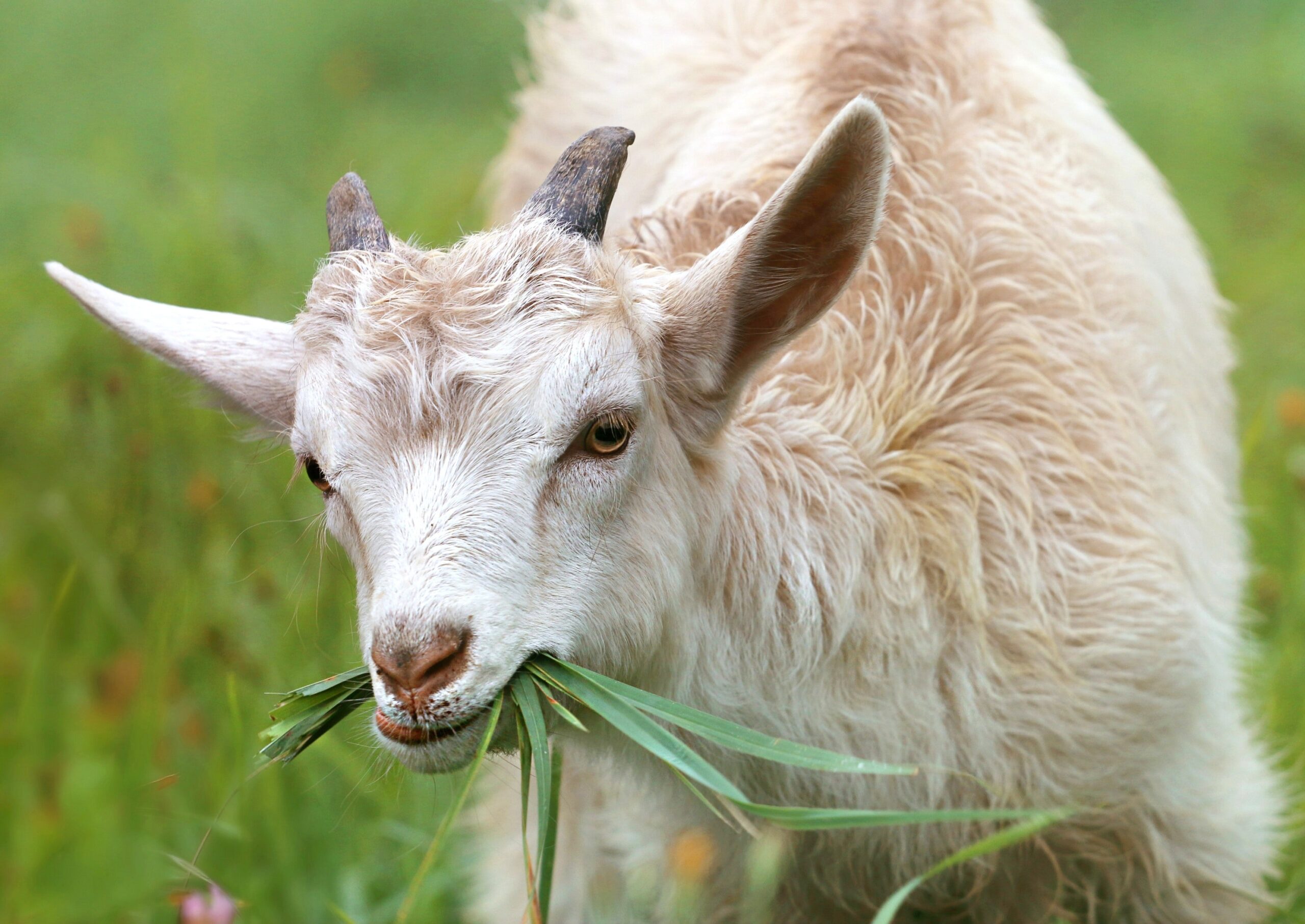Written by: Bria Osborne, OVC 2026
Edited by: Dr. Paisley Canning
Bloat is one of the emergencies that you may experience as a sheep and goat owner. Knowing what it is, what causes it, the signs, and how to treat, is important for ensuring the health of your animals.
Bloat is the accumulation of gas or froth in the rumen that is not being expelled orally through the process of eructation (burping) and cud chewing.
Bloat is usually caused by an overeating event. The overconsumption of grass, forage, and grain can all cause bloat. This large amount of food causes the rapid buildup of froth in the rumen. This froth causes the rumen to expand and stretch rapidly, blocking sensors that tell the animal to belch and release gas therefore resulting in bloat (more specifically frothy bloat).
Bloat can also be caused by a bolus of foreign material, or by a foreign object lodged in the esophagus and physically inhibits the belching of air, this is called free gas bloat or choke.
When an animal experiences a bloat event, their rumen gets so full that it restricts blood vessels. These blood vessels being restricted prevents venous return, causing low blood pressure and low blood oxygen levels in the arteries. This prevents the vessels from delivering oxygenated blood to the brain. The brain being deprived of oxygen leads to death.
How can I recognize if my sheep or goat has bloat?
Common signs associated with bloat:
- Sudden death
- Distended left abdomen that sounds like a drum when thumped (figure 1 and figure 2)
- Pain and discomfort
- Kicking at abdomen
- Reluctance to eat and move
- Respiratory distress
- Bellowing
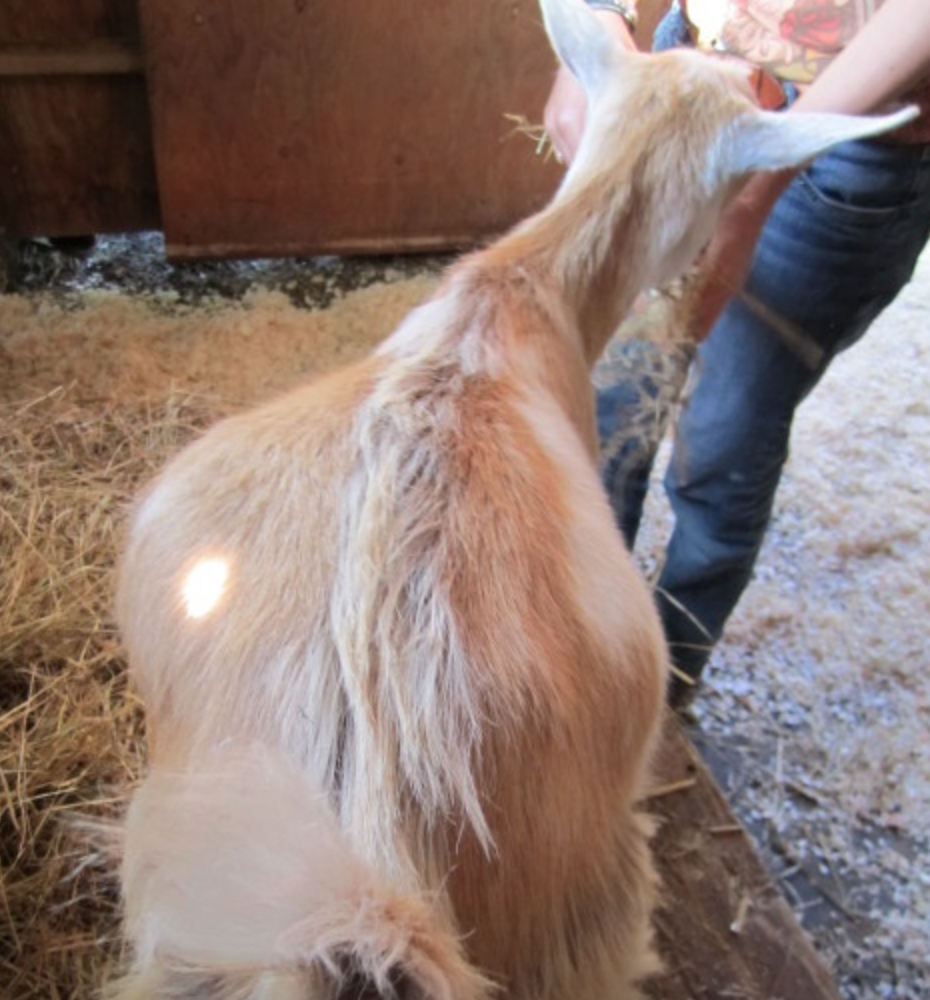
Photo credit: MannaPro (https://www.mannapro.com/homestead/feeding-baking-soda-to-your-goats)
Figure 1: The goat above is experiencing bloat. Note the left side of the abdomen is distended.
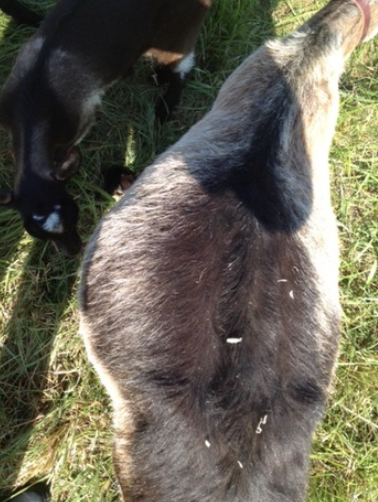
Photo credit: Little seed farm (https://littleseedfarm.com/blogs/news/goat-bloat-treating-one-of-our-milking-does)
Figure 2: Above is another example of a goat experiencing bloat. Note how the left side of the abdomen is more distended than the right side.
How to treat?
For frothy bloat, the administration of an antifoaming agent (figure 3) via drench or stomach tube (figure 4) usually does the trick. For free- gas bloat, a stomach tube (figure 4) should be used to dislodge the foreign material. In serious bloat events a veterinarian may have to administer a trocar and cannula (figure 5). The trocar and cannula are pushed through the body wall and right into the rumen. They are administered when the animal is close to death and the pressure needs to be relieved right away, or if the previous attempts at stomach tubing or antifoaming agents prove unsuccessful.
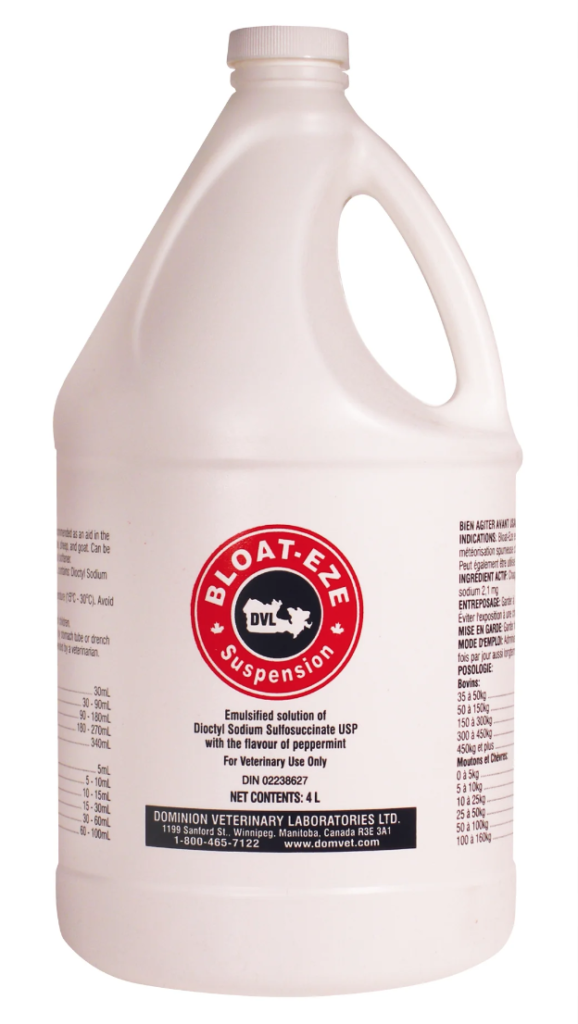
Photo Credit: Dominion Veterinary Laboratories
Figure 3: Above is the product “Bloat Eze”. It is used in the treatment of frothy bloat.
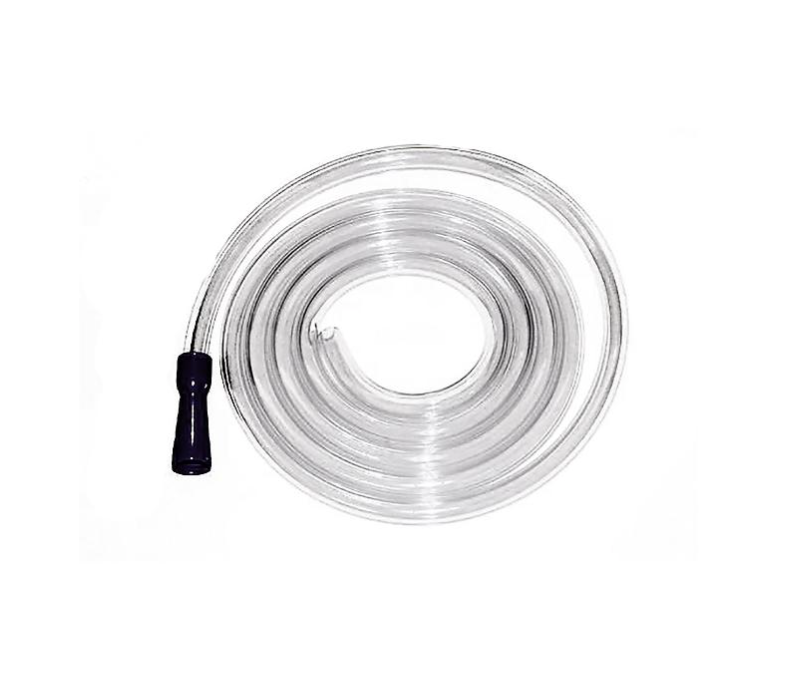
Photo credit: ValleyVet
Figure 4: Above is an example of stomach tube that can be used to administer antifoaming agent or to dislodge foreign material.
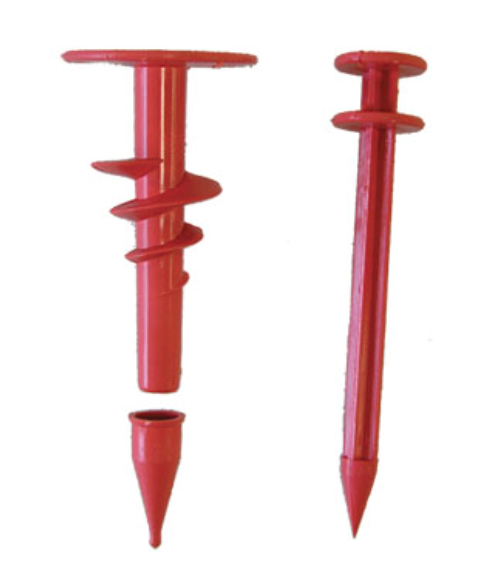
Photo credit: Jorvet
Figure 5: Above is a trocar and cannula that get used when an animal is experiencing a serious bloat event. A trocar and a cannula should only be administered by your veterinarian.
Please feel free to contact Dr. Canning if you need help identifying if your animal has bloat, if you need assistance with administering antifoaming agent, or if the bloat is not clearing up after the antifoaming agent was delivered. You can contact the clinic at [email protected], or on facebook.com/upperthamesvs .
References:
http://www.uapb.edu/sites/www/Uploads/SAFHS/FSA9625.pdf

